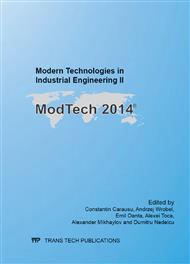p.652
p.656
p.662
p.668
p.674
p.680
p.686
p.692
p.697
Computer Aided Process of Designing the Mechatronic Silesian Greenpower Electric Car
Abstract:
"The Greenpower Corporate Challenge" is an annual race of four-wheeled electric vehicles organized on the tracks in the UK. Participants of the "The Greenpower Corporate Challenge" contest are students of high schools and universities which are involved in designing and construction process of an electric race car. The basic goal of GPCC competition is making the largest possible number of laps on the race track - for a limited time of 90 minutes. The main restriction is imposed by the organizers, the power source and type of the motor driving the car, which increases competition level and equalize the chances of teams. The design process of the vehicle was followed by the drawn intuitively, an iterative procedure. A simplified methodology for the design and construction of the vehicle has been adopted, which was based on a cyclic process of designing every mechatronic subsystems and gathering them all in one CAD model. During all designing and engineering tasks a mathematical model of the vehicle has been used. With using finite element method (FEM) and studies using an anthropometric drivers model there was a continuous control of the correctness of the solutions and results. This article describes the computer research methods used in the design process of selected systems and components of the vehicle Silesian Greenpower and their adequacy in relation to traditional methods.
Info:
Periodical:
Pages:
674-679
Citation:
Online since:
October 2014
Authors:
Keywords:
Price:
Сopyright:
© 2014 Trans Tech Publications Ltd. All Rights Reserved
Share:
Citation:


